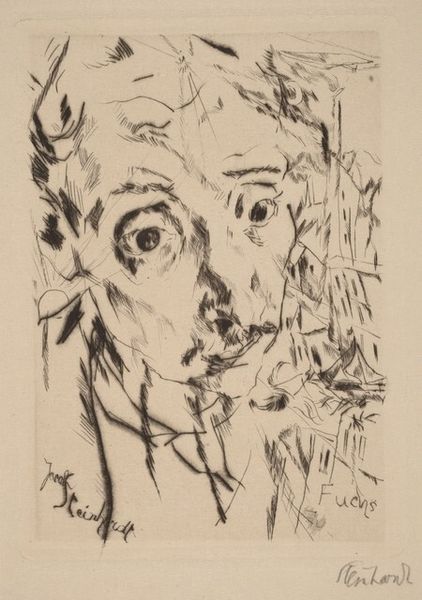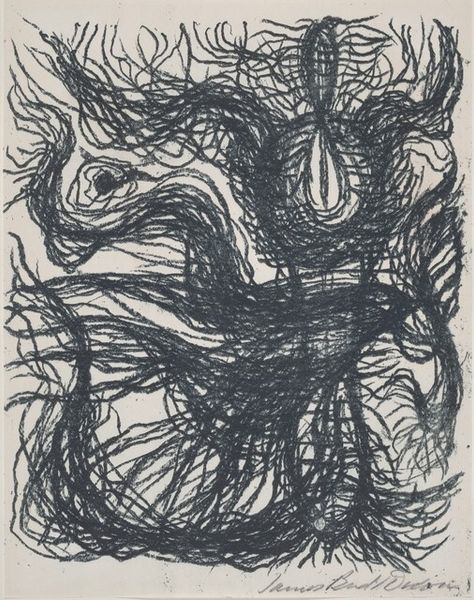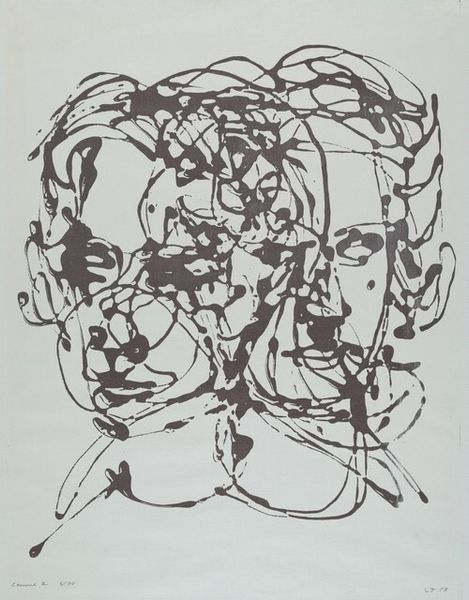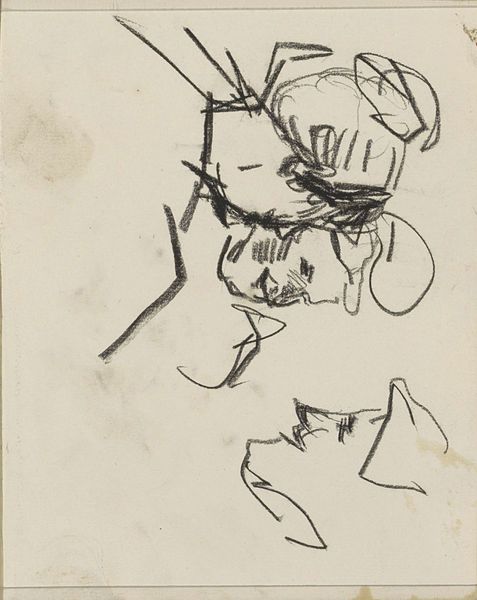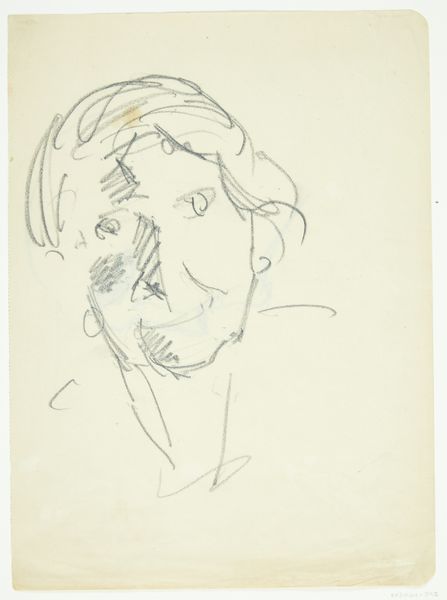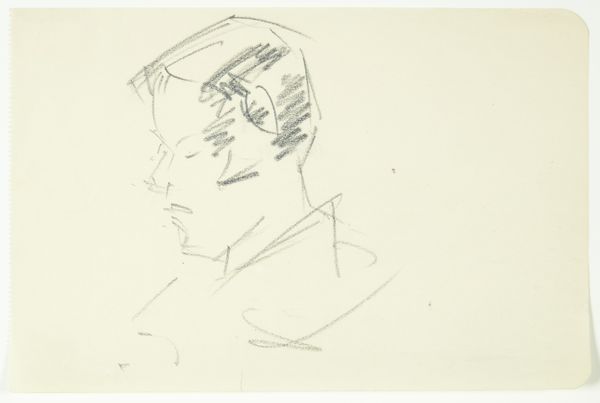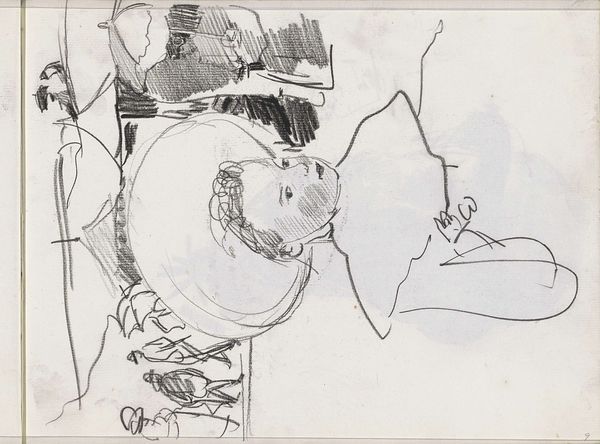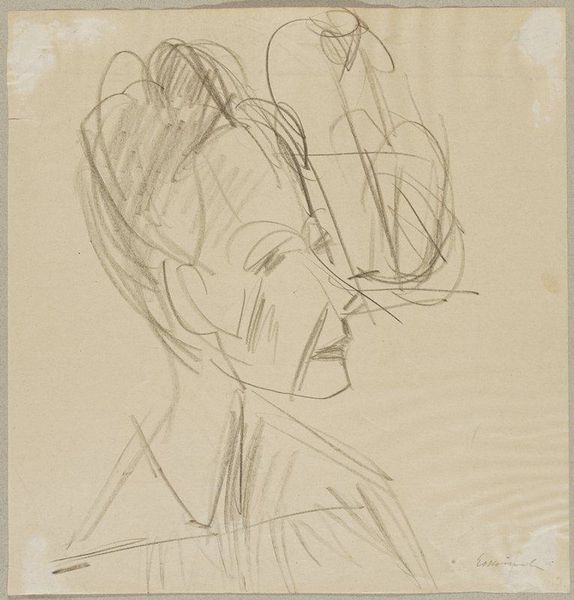
drawing, ink
#
portrait
#
abstract-expressionism
#
drawing
#
figuration
#
ink
Dimensions: overall (approximate): 22.8 x 18.7 cm (9 x 7 3/8 in.)
Copyright: National Gallery of Art: CC0 1.0
Curator: This compelling ink drawing is simply titled “Untitled,” created around 1945 by Jackson Pollock. It's a really striking piece, especially in how the stark black lines contrast with the yellowed paper. What's your initial impression? Editor: It feels raw, unsettling. Those piercing eyes, the fragmented figures… it's almost like a psychic battlefield rendered in ink. What about you? Curator: Well, seeing it, I think about the specific inks and papers Pollock would've had access to at the time. Paper shortages, variations in ink quality - these mundane constraints certainly shaped the immediacy and expressive qualities we see. Editor: Absolutely. And let's also consider the socio-political climate. World War II had just ended, and trauma and alienation were pervasive. This drawing, with its distorted figures and sense of unease, seems to me to mirror that post-war anxiety. Is there an argument for its political urgency as a silent scream for help? Curator: That’s insightful. And speaking of immediacy, observe the sheer force evident in the application of ink to paper. Consider his physical interaction with the materials; it really comes alive in the finished drawing, doesn’t it? There is such energy transferred. Editor: Indeed. This energy translates visually as defiance; a furious dance between chaos and control, isn’t it? One that certainly challenged mid-century American social constructs. This reminds me how female abstract expressionists were received. Curator: Good point. Looking closer, you can see evidence of different types of pens used as the line weights vary a good deal. But in regard to your question of how political the image can be read – it is possible his techniques or access was governed by restrictions of that time and social discourse? Editor: Of course, even the artistic tools are laden with meaning when filtered through the times that produced it. It would be absurd to not consider this as we study Abstract Expressionism, especially. Curator: I agree. Well, considering this untitled drawing through the lenses of materiality and societal impacts certainly casts new light on Pollock's practice. Editor: It highlights, really, the ways art becomes a vessel for both the individual and collective anxieties of a particular historical moment. And by understanding its cultural and political underpinnings, we have gained a deeper, more nuanced understanding of it, I hope.
Comments
No comments
Be the first to comment and join the conversation on the ultimate creative platform.


